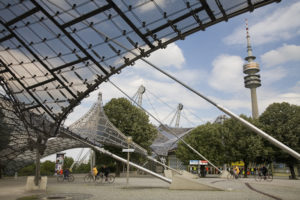Architecture always seeks express relationships between man and nature, the built and unbuilt, a programme and its context, the interior and the exterior, and so on. While it may seem architects address these relationships intuitively, it is their quantification in terms of certain parameters that enables one to better understand the truth of the design. Since ancient times, man has been attempting to apply formulae, mathematical relationships and rules of thumb to define great architecture. From the great pyramids of Giza to the Parthenon which inherently used mathematical formulae to define beautiful proportions, parametrization in architecture has evidently been prevalent much before the advent of computer technologies. Designers like Antonio Gaudi, Pier Luigi Nervi and Frei Otto too had conceived and implemented complex parametric forms using hand modelling, sketching, drawing and manual calculations.


The frugality, fluidity and optimisation of functionality in nature’s forms has inspired some who have try to ‘generate’ those patterns by emulating nature’s organic logic. In the late 20th century the computer emerged as a tool for simulating the generation of biological forms (morphogenesis). Coral, sponges, and other simple marine and plant life developing and performing in response to a limited set of measurable criteria—light, ocean current, nutrition, etc.—could be analysed and reconstructed using parametric design models in the computer. Applying similar morphological simulations in architecture, designers in the late 1980s to mid-1990s began to use the computer alongside software developed for aerospace and the moving picture industry to “animate form.” In the year 2000, Architect Makoto Sei Watanabe demonstrated what he termed as ‘Programme Generated Architecture (PGA)’ for the design of the Iidabashi subway station in Tokyo. Watanabe generated a web frame using ‘inherited’ DNA of the subway network engineering.
The basic premise of parametric designing is set up by defining the parameters important for the design. These parameters are linked to the physical properties of the building. The next step is establishing the mathematical and logical relationships between them. The variables and constants in the formulae can then be toggled to generate different possible outcomes. Parameters inform about the variables and provided dependencies and relationships of information. They may be used to define geometric properties such as length, breadth, height, area, volume, and may even define performance specifications such as energy consumption, wind load resistance, light transmittance, heat gain, etc.
This paradigm of design has been applied on various scales ranging from furniture design, architecture to urban planning. It also finds applications in designing environmentally responsive building skins. The Park at Hyderabad by SOM employs a perforated aluminium panels façade, in which the size and amount of perforations have been calculated on the basis of solar orientation, programme space type, quality of view, and access to daylight as some of the parameters.
Advanced Computing has made the process of parametric design much more dynamic, giving the freedom to manipulate parameters to discover new forms in real time. Also as buildings become more intelligent, parameters may be programmed into the building itself to describe active behavioural responses to external stimuli, for example light sensors and occupancy sensors to determine the when and where to switch on artificial lighting. One can even perhaps imagine

